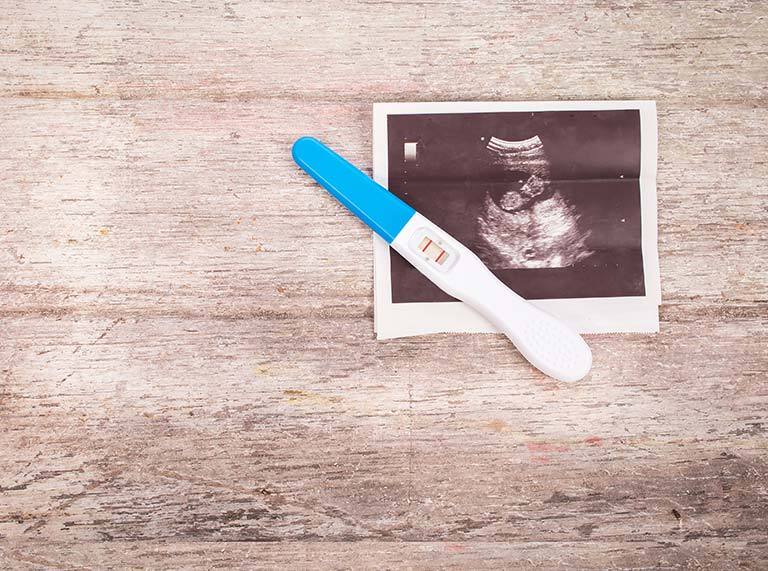Prenatal and Postpartum Care

The first visit occurs as soon as possible after a positive pregnancy test. For established patients, this “confirmation of pregnancy” visit is usually brief and includes a confirmatory urine pregnancy test and limited pelvic exam to confirm that the size of the uterus corresponds to the expected gestational age based on the last menstrual period. A more comprehensive physical exam may be performed for new patients. A pap smear will be obtained if it is due.
Personal and family medical history is briefly reviewed to identify any immediate pregnancy risks or complications. Prenatal vitamins are prescribed, as well as any other necessary medications (such as treatments for nausea). Options for genetic screening are also discussed. Prenatal lab tests (blood type, complete blood count, screening for hepatitis and syphilis, and rubella immune status) are ordered to be drawn at the next routine office visit.
Early ultrasound (at 7-8 weeks) is usually recommended to confirm the gestational age and rule out twins. In many cases, this first ultrasound is not considered “medically necessary” by the insurance carrier. If there are no obvious problems on exam or risks by history, this first ultrasound is considered optional and, if not covered by insurance, will result in a charge to the patient. We feel the information provided is well worth the cost and may head off future problems (such as incorrect dating, undiagnosed twins or early failed pregnancy).
An “anatomy survey” and “cervical length” are recommended for everyone at about 20 weeks. Certain patients may be referred to a perinatologist (specialist who cares for high-risk pregnancies) for these tests. Some forms of genetic screening include ultrasound, and some pregnancy complications require periodic ultrasound assessments.
The “New Prenatal Visit” is scheduled at about 12 weeks gestational age. Gestational age refers to weeks since the first day of the last menstrual period. This visit includes a physical exam and complete review of personal and family medical history. A pap smear is performed if it was not done at the confirmation-of-pregnancy visit, but is not necessary if medical records confirm that cervical cancer screening is up-to-date. The plan of care will be established and the physicians will determine whether the pregnancy is appropriate for collaborative care. Infrequently, the pregnancy may be so high risk that referrals to alternative caregivers may be recommended.
Subsequent visits usually occur at 4-week intervals through 28 weeks, 2-week intervals through 36 weeks, andweekly intervals from 36 weeks until delivery.
Pregnancies complicated by diabetes, hypertension, fetal growth problems, or other high-risk diagnoses usually require more frequent visits and fetal testing. Most high-risk patients will see the physicians weekly during the last few weeks of pregnancy and whenever new problems or issues arise. If the pregnancy is considered low-risk for complications, most patients will be seen by the CNMs with physician consultation as needed.
The postpartum visit is an important component of obstetric care and is usually scheduled for about 6 weeks after uncomplicated vaginal delivery or cesarean. Birth control options are discussed, a physical exam is performed, and problems are addressed.

SHARE